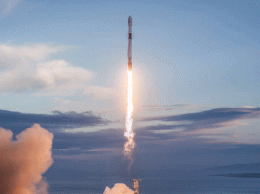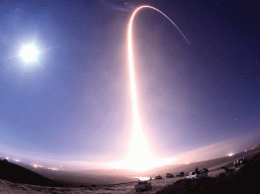Editor’s note: This article was updated shortly after it was posted to include information about the planned renaming of the base.
Vandenberg Air Force Base was responsible for 20,000 jobs and $5.8 billion in economic activity in 2020, with room to grow to $7.9 billion in output by 2030, according to a new study by Cal Poly San Luis Obispo.
The study, released May 14, was commissioned by the Regional Economic Action Coalition, or REACH, a San Luis Obispo-based nonprofit, and funded by REACH and the county of Santa Barbara. It was conducted by two Cal Poly professors, Cyrus Ramezano and Stephen Hamilton, and two undergraduate research assistance, Alexander Lustig and Spencer Rhode.
The base is one of the military’s primary launch centers for rockets and satellites, and is becoming a hub for the private space industry as well. In fact, on the afternoon of May 14 the base is planning a ceremony to rename itself Vandenberg Space Force Base. The 30th Space Wing will be renamed Space Launch Delta 30.
The economic impact of the base is concentrated in Santa Barbara County, where it is located. Total employment in the county attributable to Vandenberg was 15,071 jobs in 2020, with another 832 jobs in San Luis Obispo county and 4,502 in the rest of California.
Economic output attributable to the base was $4.3 billion in Santa Barbara County, $113 million in San Luis Obispo County and $1.3 billion in the rest of the state.
Vandenberg was responsible for $1.3 billion in personal income in Santa Barbara County, $108 million in San Luis Obispo County and $451 million in the rest of California.
“This study really illuminates the many and far-reaching ripple effects of having the nation’s premier West Coast launch site in our backyard,” REACH Chief Operating Officer Andrew Hackleman said in REACH news release. “The future growth projections also underscore the big payoff of supporting the burgeoning commercial space industry around the base and into San Luis Obispo County.”
The Cal Poly team studied a range of possible scenarios for how the base might grow between 2020 and 2030. Under a “stand-still scenario,” total employment impact would shrink from to 20,405 jobs to 16,330. Economic output would go from $5.8 billion to $6.5 billion, which would be less than the pace of inflation if inflation in the 2020s is similar to what it was in the 2010s.
In a scenario in which the base expands its commercial and military space operations and sees infrastructure investments by both the U.S. military and nearby local governments, jobs would decline slightly by 2030, to 19,889, and economic output would hit $7.9 billion.






 Print
Print Email
Email

















